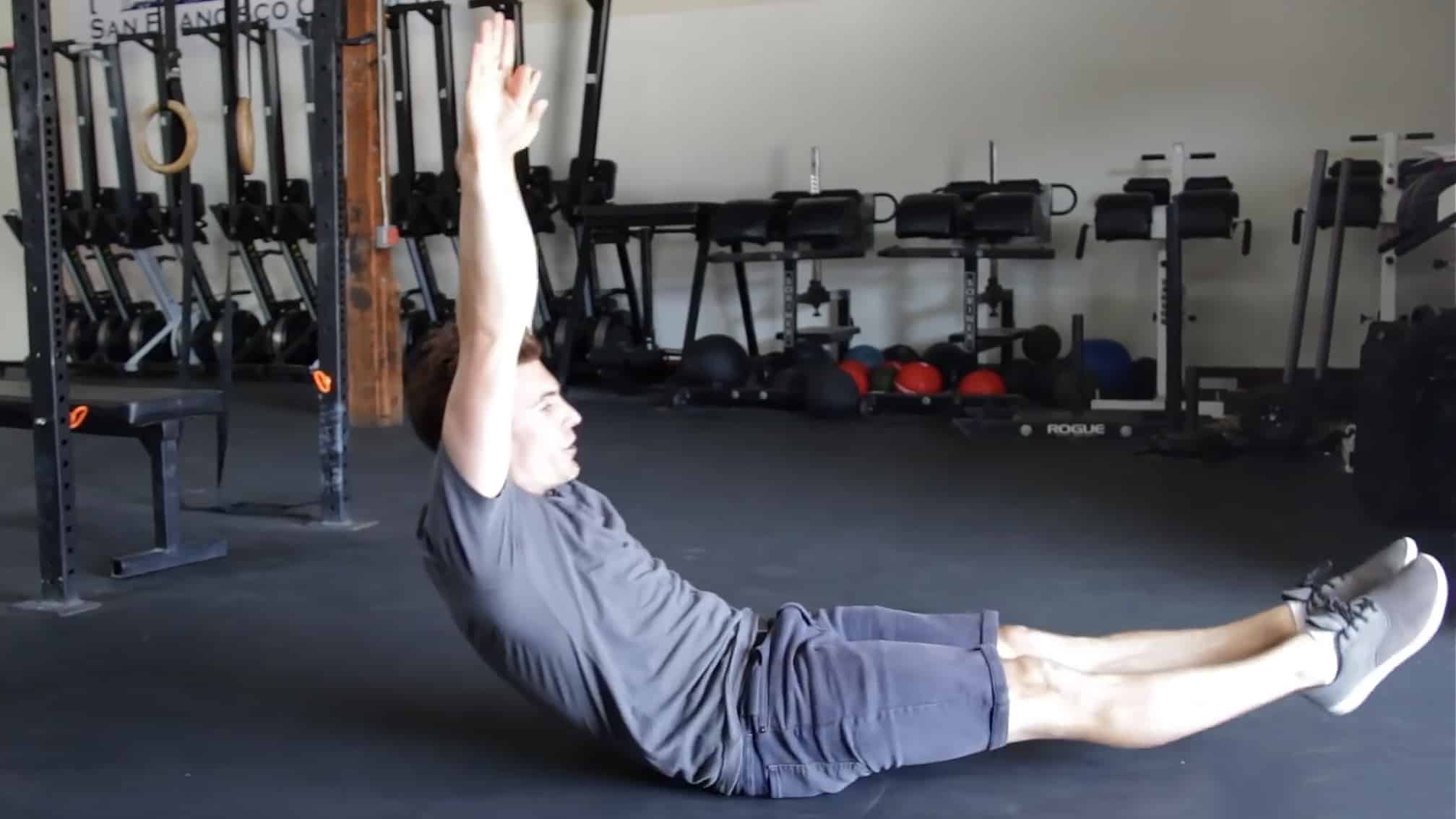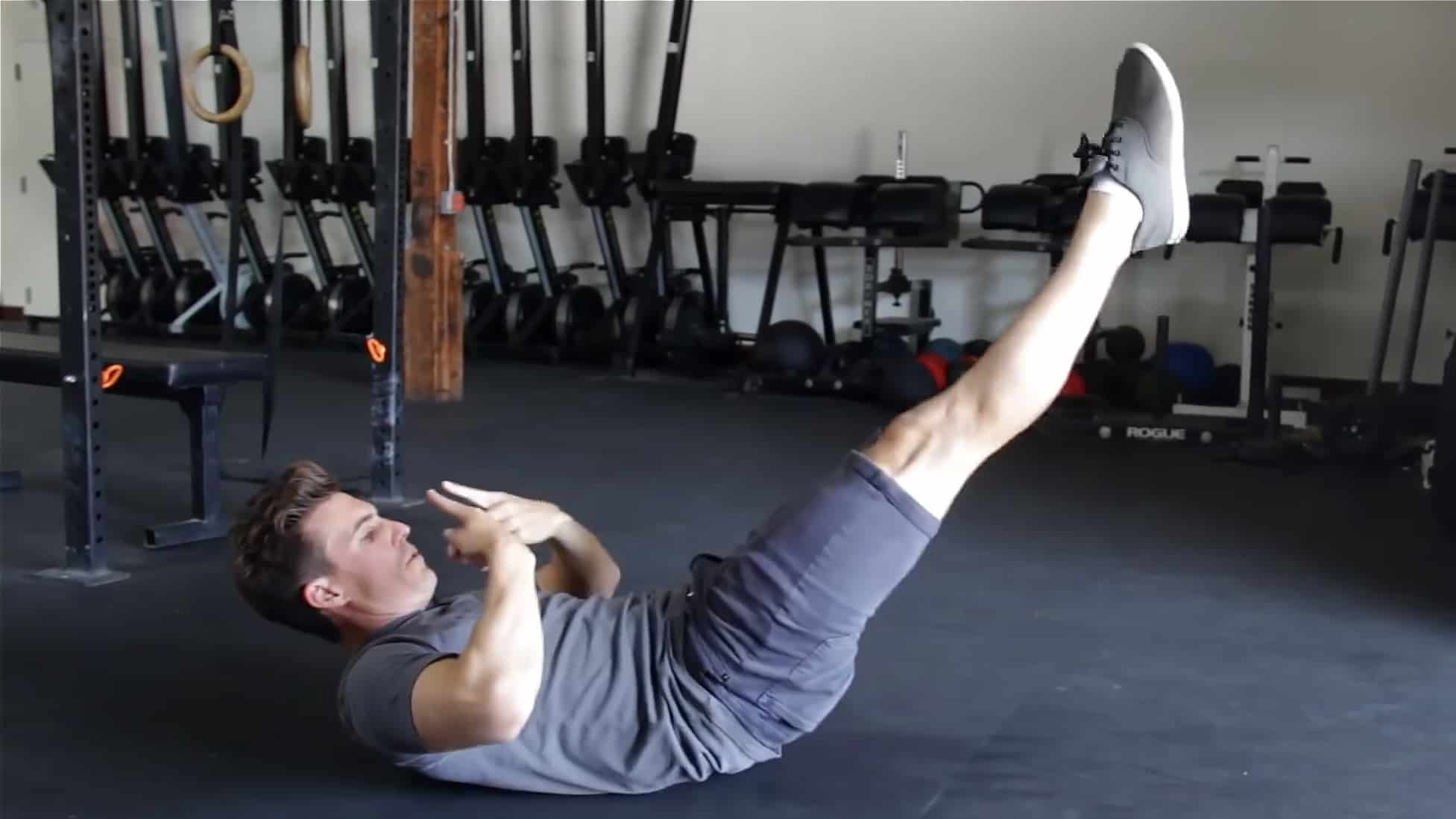Static positions like the hollow body position are great for developing awareness of motion and what your body feels like under certain demands. The hollow body shape is designed to teach spinal stability, which translates to better spinal position while performing movements. The key phrase here is other movements. To further progress this ability to stabilize your lumbar spine for better overall movement control, you can add a little motion: a rock. The tension around your spine shifts as you rock back and forth.
Here is how to perform a Hollow Body Rock
1. Start in the hollow body position.

2. Drop your legs toward the ground to initiate the rock. Maintain the hollow body position as you rock forward.

3. Descend backward by dropping your shoulders to the ground and pulling your legs away from the ground. Continue rocking backward by allowing your arms to reach for the ground, and emphasize picking up your hips in order to maintain the hollow body position.

Notice that I used the word shift. As you rock, your center of mass shifts from the front of your base of support (your lower back and butt) to the back of your base of support (your upper back). Especially when performing the Hollow Rock for the first time, you may find that the shifting back and forth causes problems, even if you are really good at holding the static hollow body position.
The rocking motion itself is not necessarily difficult, but it does cause changes in tension at different levels of your spine as you rock. As you rock forward, your legs pull your body forward and down and your upper body follows by performing a sit-up. Even if you never do traditional Sit-ups, you perform the same movement seen in the forward rock every time you get out of bed or stand up from a chair; these expressions are an example of pushing. It is usually on the backward rock that the spine tends to deviate in shape, where the hips and legs are left behind and the spine starts to reverse into a more extended position, especially at the top of the lumbar region or ribcage. This happens because as you rock backward, you progressively load your spine with the weight of your legs pulling down, which requires you to perform a pull with your hips up and toward your face. As simple as it may seem, we have lost some of our ability to perform this movement due to our modern environment.
Every time you sit down on a chair, you perform a pull from your legs. Because the chair is stable, high up, and has a backrest, you don’t usually pull yourself into the chair with control; you just drop. This convenience has led to underdevelopment in our ability to pull from our lower extremities, which causes extension at the lumbar spine and a subsequent loss of motor control, which is expressed as a loss of movement control. This is one of the main reasons people get injured when running. Every lift of the foot causes over-tension and therefore stress on the spine, leading to injury.
By adding this Hollow Rock to your training, you learn not just how to change tension around your spine, but also the basic principles of pushing and pulling from your lower extremities.
For more information, you can reference Freestyle the book, Page 57-58, Chapter 2, Part 1.
Watch this video on motor control and the introduction to the hollow body rock.
Contributor: Carl Paoli